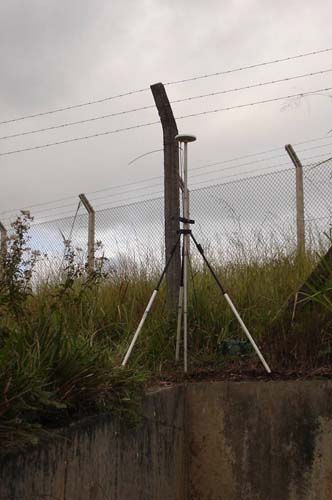
The multipath condition is by no means unique to GPS/GNSS. When a transmitted television signal reaches the receiving antenna by two or more paths, the resulting variations in amplitude and phase cause the picture to have ghosts. This kind of scattering of the signals can be caused by reflection from land, water, or man-made structures. In GPS/GNSS, the problem can be particularly troublesome when signals are received from satellites at low elevation angles; hence, the general use of a 15° to 20° mask angle. The use of choke ring antennas to mediate multipath may also be considered. It is also wise, where it is possible, to avoid using stations that are near structures likely to be reflective or to scatter the signal. For example, chain-link fences that are found hard against a mark can cause multipath by forcing the satellite’s signal to pass through the mesh to reach the antenna. The elevation of the antenna over the top of the fence with a survey mast is often the best way to work around this kind of obstruction. Metal structures with large flat surfaces are notorious for causing multipath problems. A long train moving near a project point could be a potential problem, but vehicles passing by on a highway or street usually are not, especially if they go by at high speed. It is important, of course, to avoid parked vehicles. It is best to remind new GPS/GNSS observers that the survey vehicle should be parked far enough from the point to avert any multipath. A good way to handle these unfavorable conditions is to set an offset point.
Avoiding obstructions is a significant part of planning and performing a good GPS/GNSS observation.